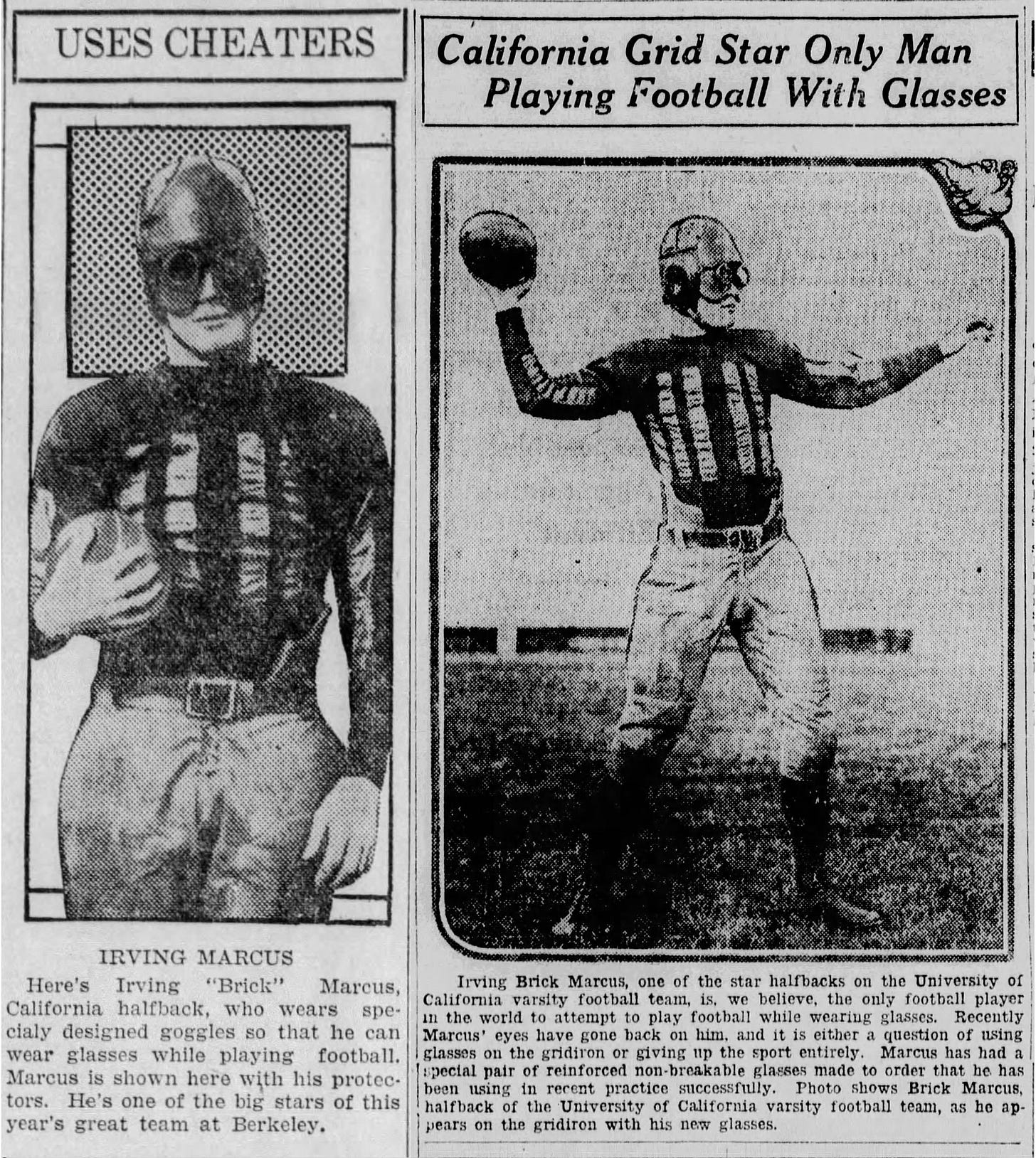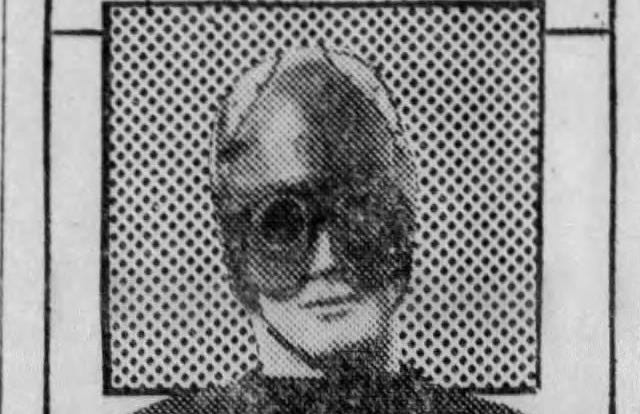Today's Tidbit... Seeing Beyond His Troubles
Despite being a man of many talents and having success, it is difficult to consider Irving "Brick" Marcus’ athletic career and not think about what might have been.
Marcus was born in Romania in 1904 and emigrated to the United States as a 4-year-old. His family settled in San Francisco, where he became a football track star at Polytechnic. Upon graduating, Marcus entered Berkeley, positioning himself as a future star based on his open-field running on the freshmen team. Unfortunately, despite loads of potential, he could not escape under a string of injuries and medical issues.
During the first minute of play in his sophomore year in 1926, Marcus broke his wrist and missed the rest of the season. He made it midway through his junior season before breaking his leg on a 17-yard run against USC. Then, the bad luck really began.
In the summer before his senior season, a bout of appendicitis required one operation, followed by tonsillitis, which required a second operation. Finally, he was cleared to play football, but vision problems set in, and since neither face masks to protect his eyeglasses nor contact lenses existed at the time, he headed to the bench until they rigged up a set of goggles to wear on the field. (He is the earlier player to wear goggles or corrective lenses on the football field that I have found to date.)

Coming off the bench, he was the Bears’ best runner. Regular readers will recall a recent story about the University of Pennsylvania crossing the country by train to play and lose to Cal on New Year's Eve 1927. As the previous report noted:
With the score tied at the end of three, Cal's Brick Marcus ran 55 yards for a TD early in the fourth quarter and later swept wide for a second touchdown to seal the game as Cal won 27-13.
Marcus was named to the 1928 Shriners' East-West All-Star but did not play after breaking his leg in practice. However, the broken leg did not keep him from joining the boxing and track teams and earning a role in a school play that spring.
After graduating from Cal, Marcus played several seasons for the San Francisco Olympic Club, which played major colleges and club teams up and down the coast. Despite playing for the team for several years, they denied him membership because he was Jewish.
Leaving the Olympic Club behind, he helped start the California Professional Football League and was the player-manager for the team comprised of Cal alums. The CPFL ultimately morphed into the Pacific Coast League.
Ol' Brick eventually left the athletic world behind, switching from his career as a stockbroker to becoming a writer, which led to his being the publisher and owner of Wines and Dines magazine, the author of several books on wine, and a general authority on the topic. He also was active in San Francisco's theater scene for many years.
So, despite many misfortunes during his athletic career, Brick lived the life of a Renaissance man until his passing in 1979.
Football Archaeology is reader-supported. Click here to buy one of my books or otherwise support the site.



